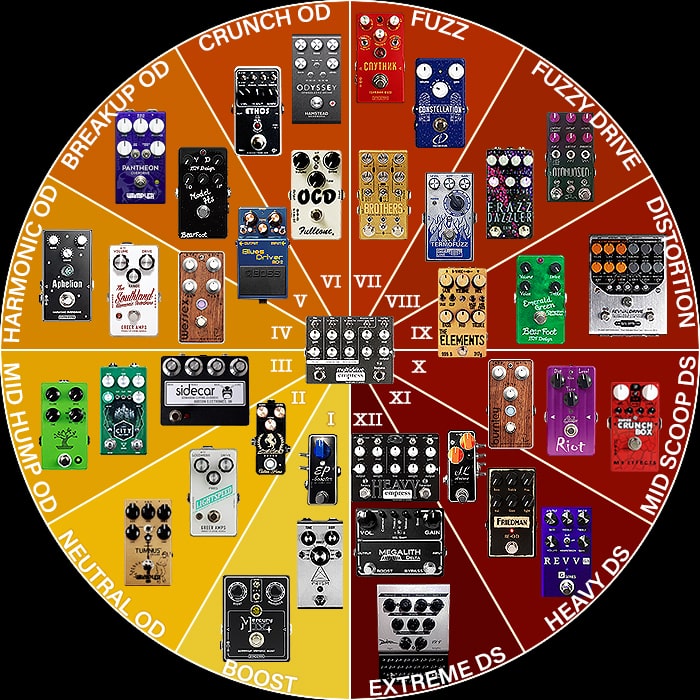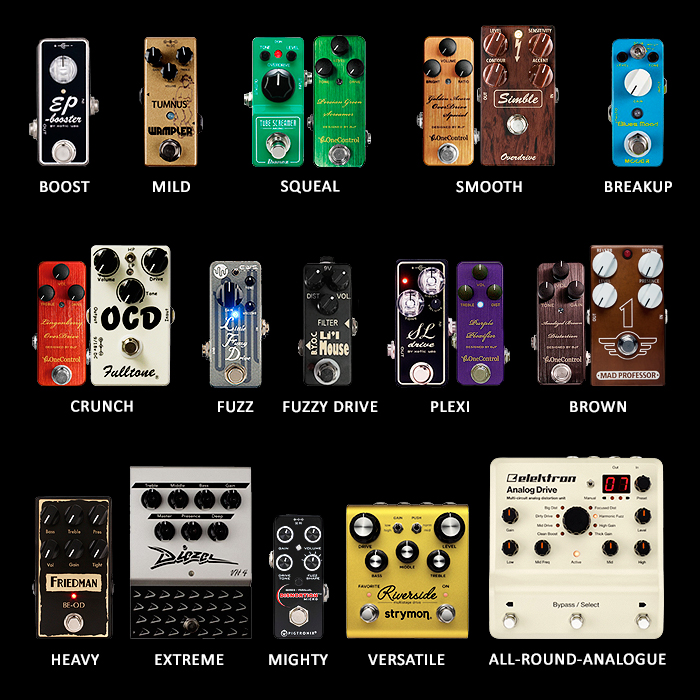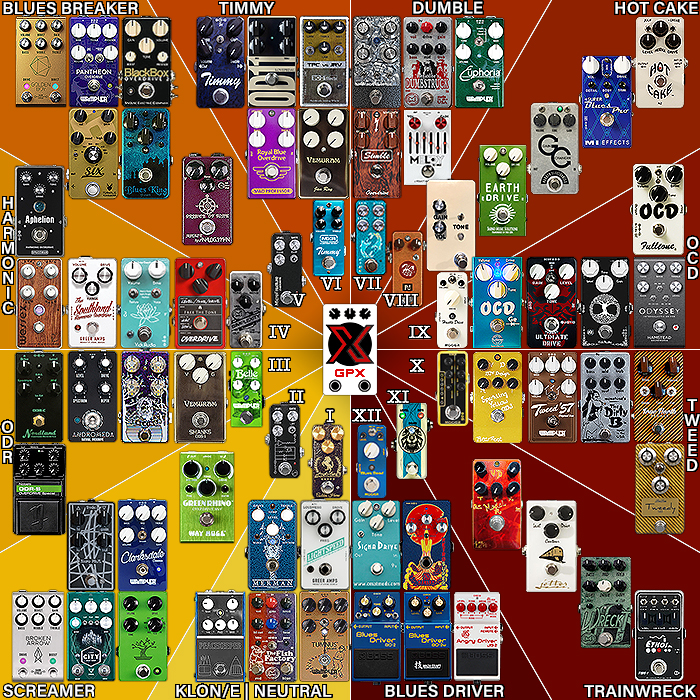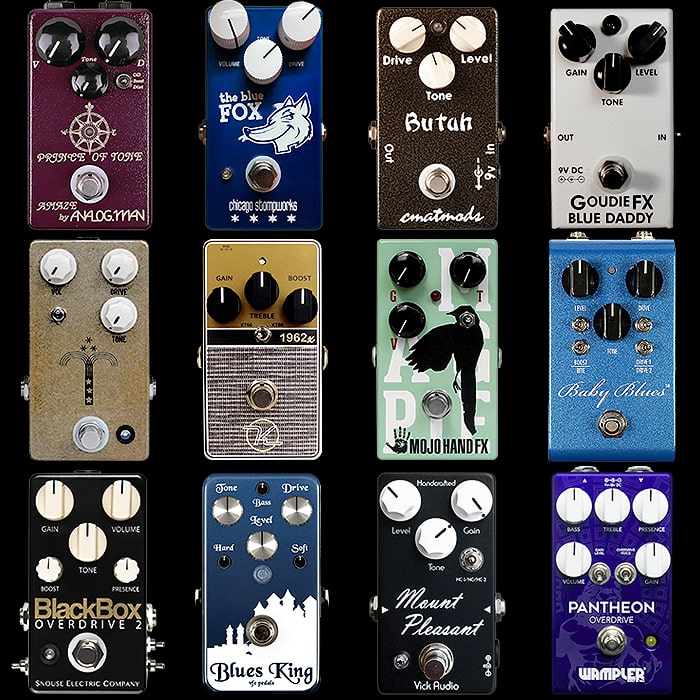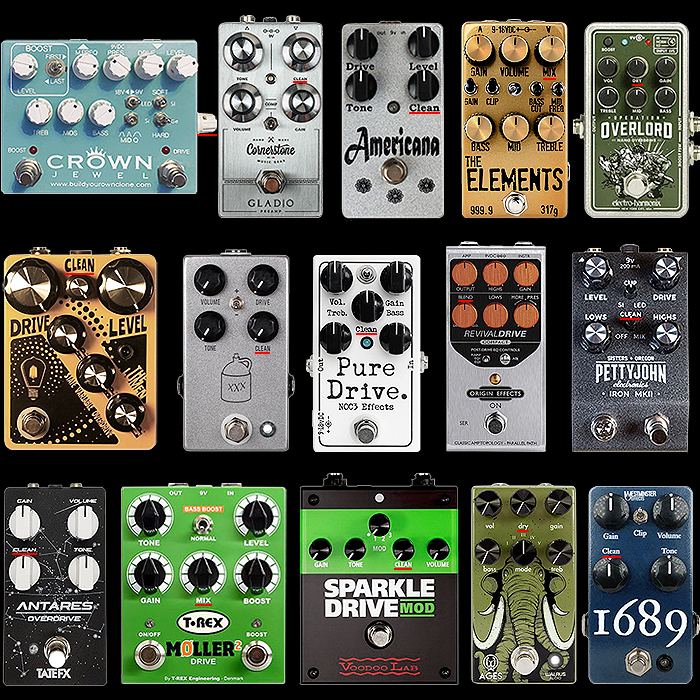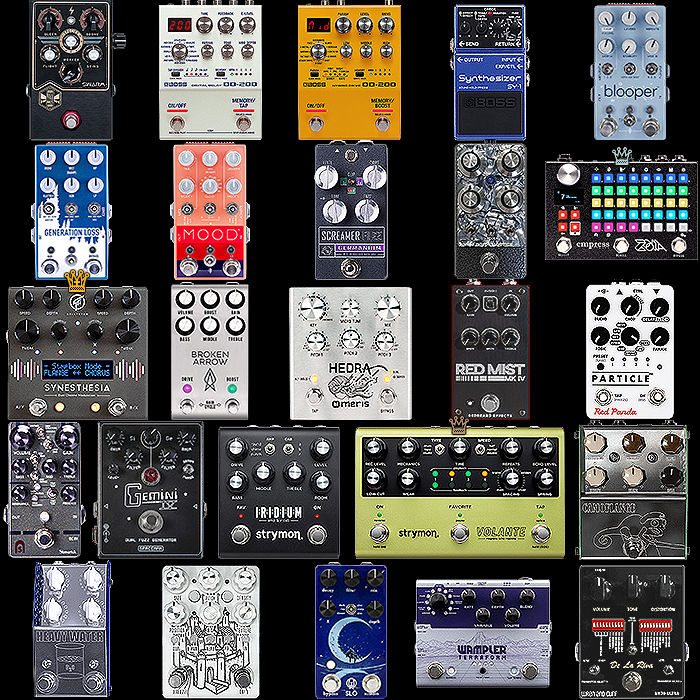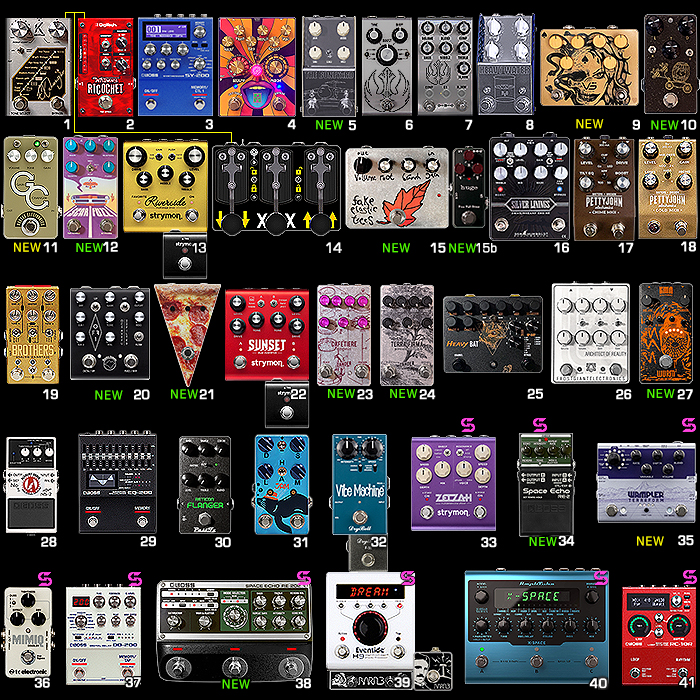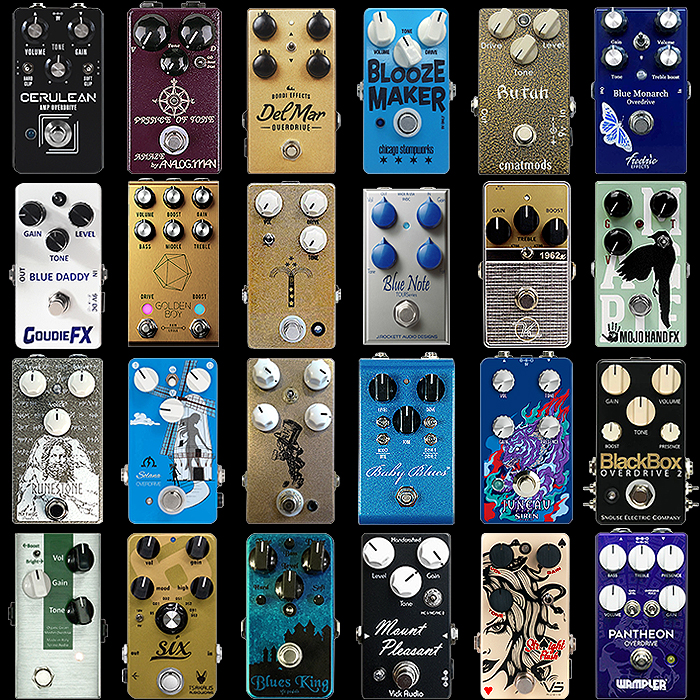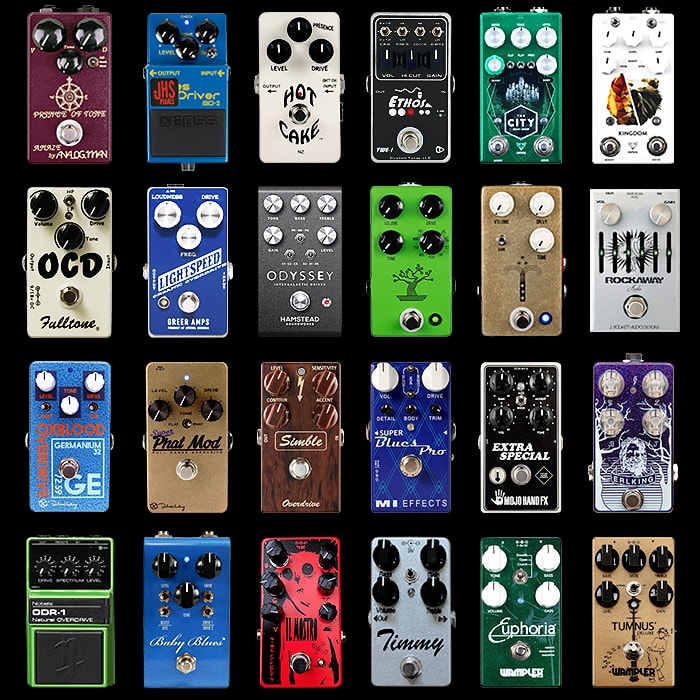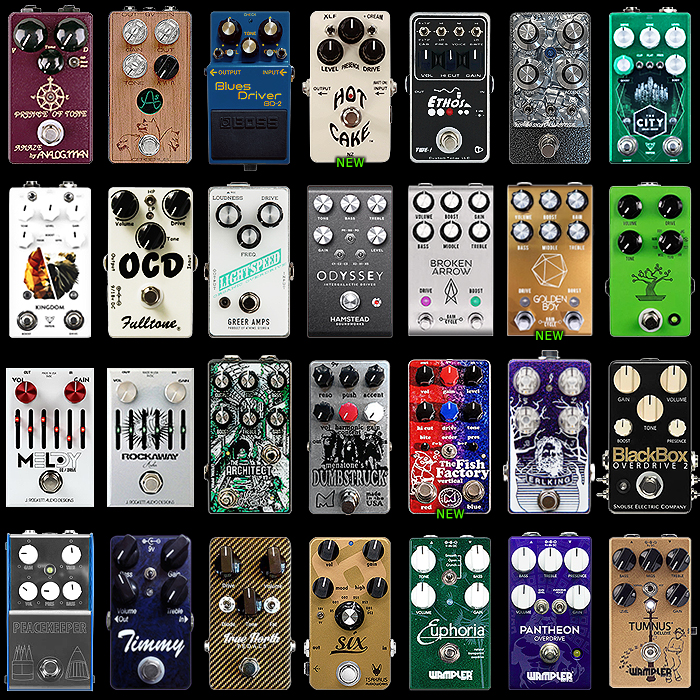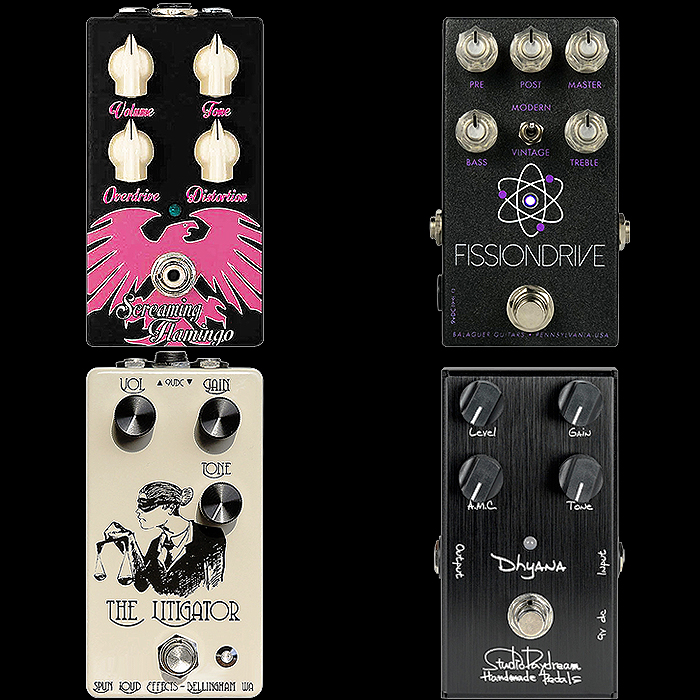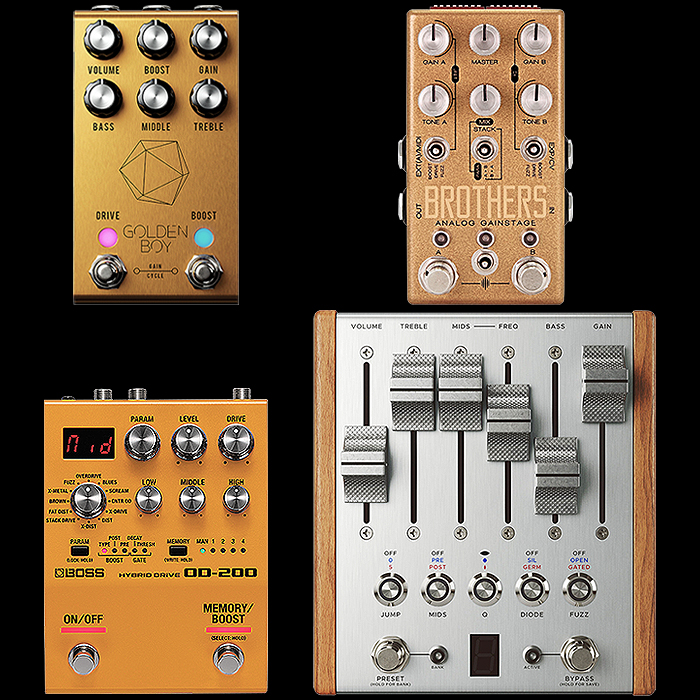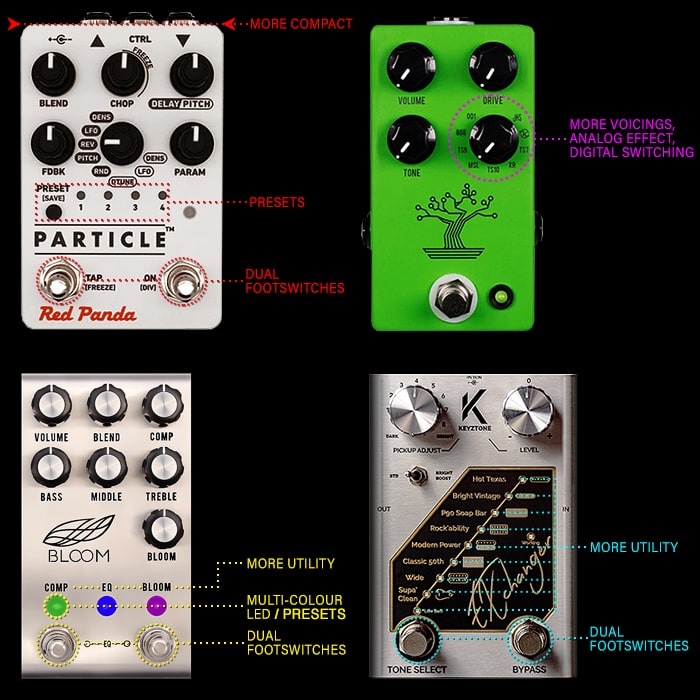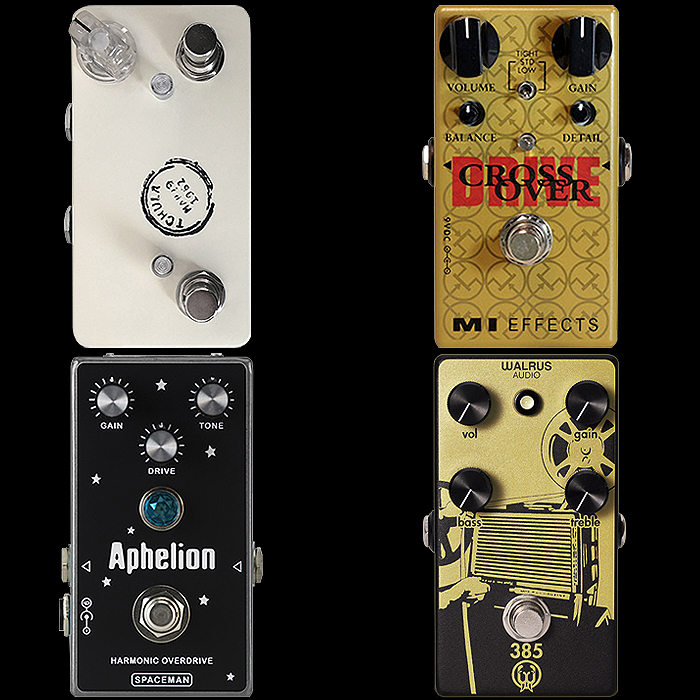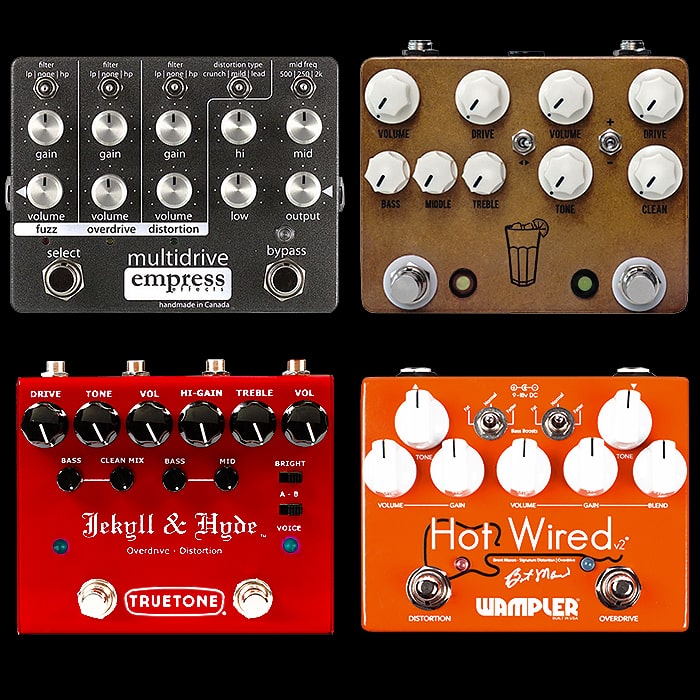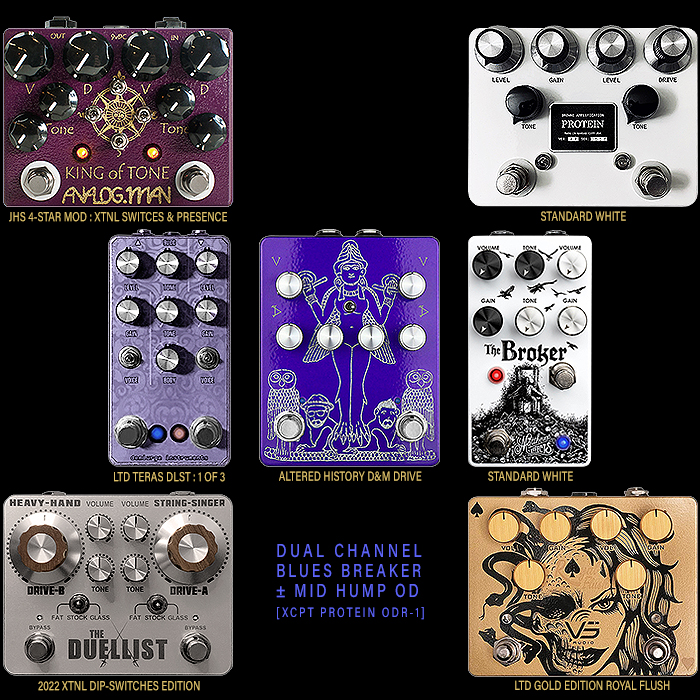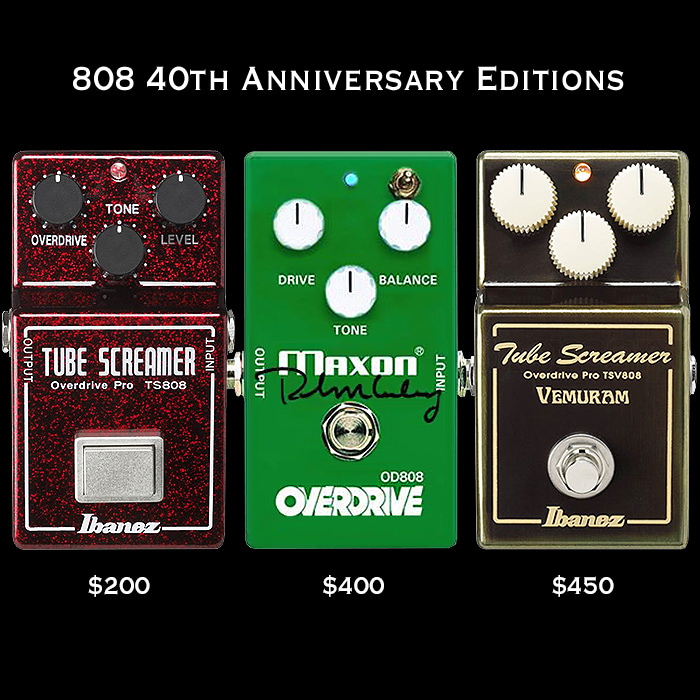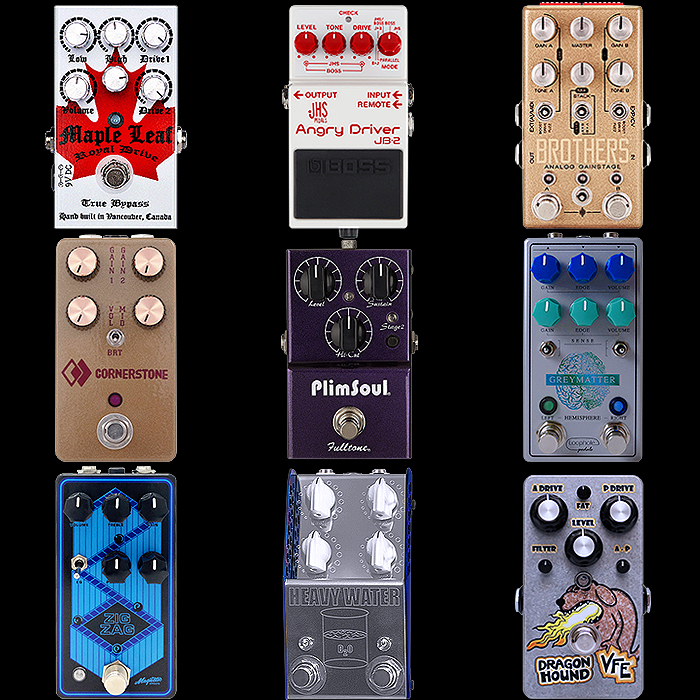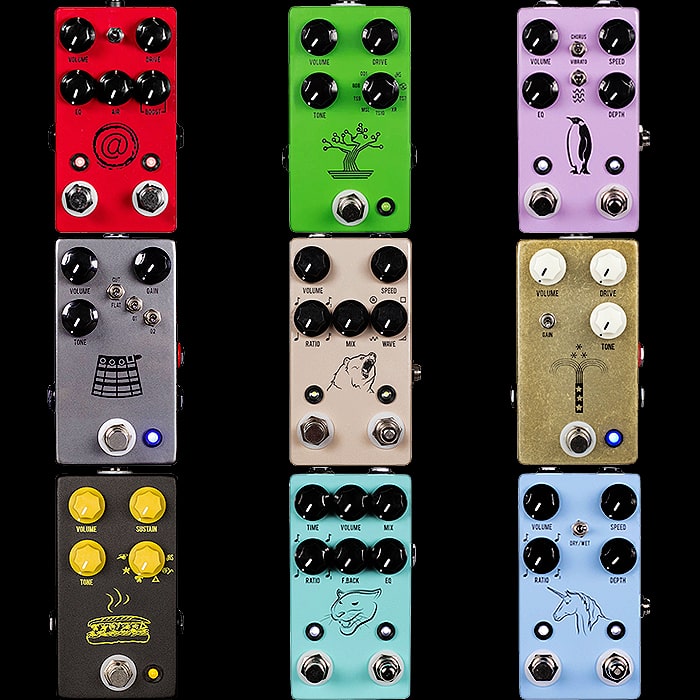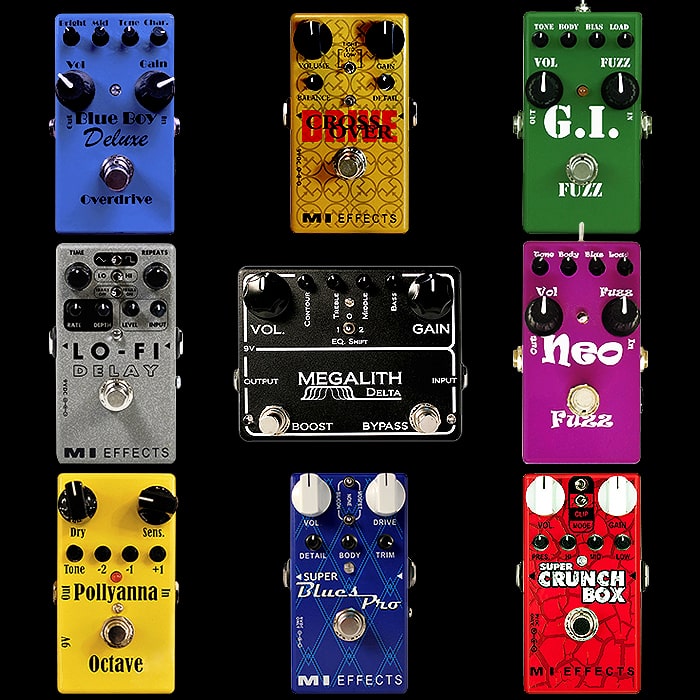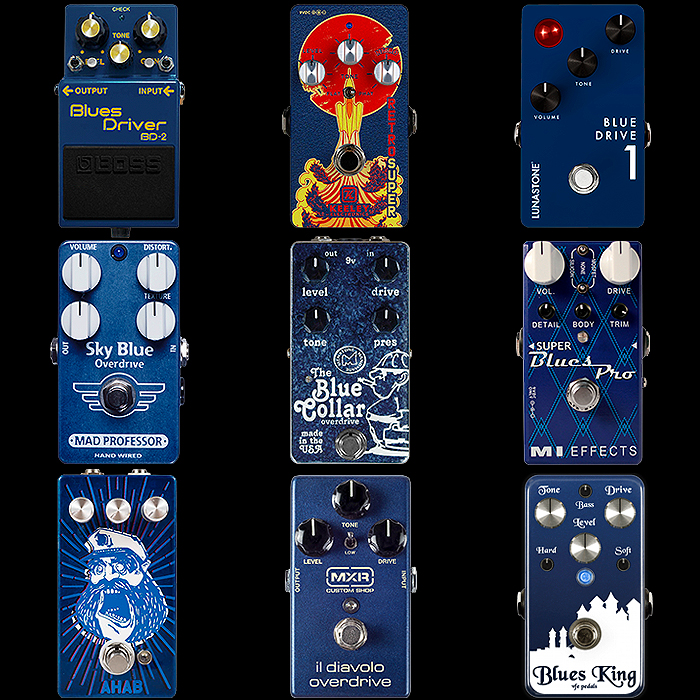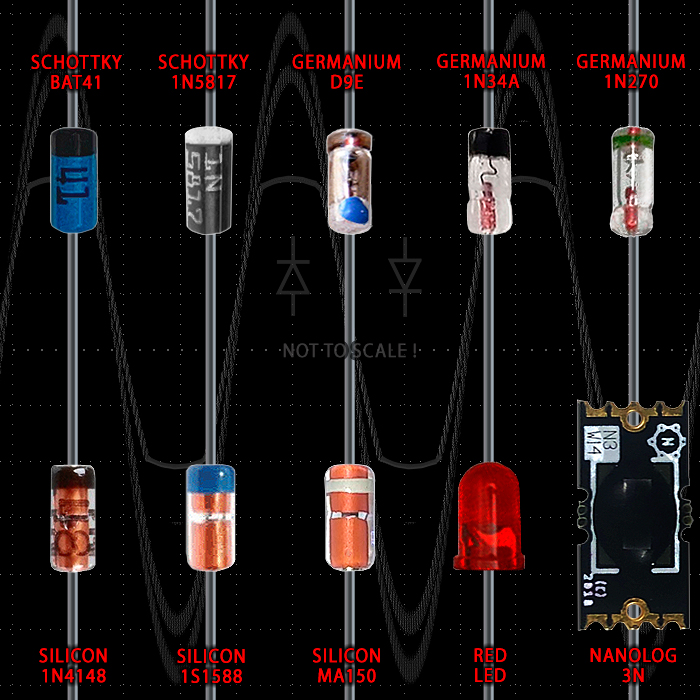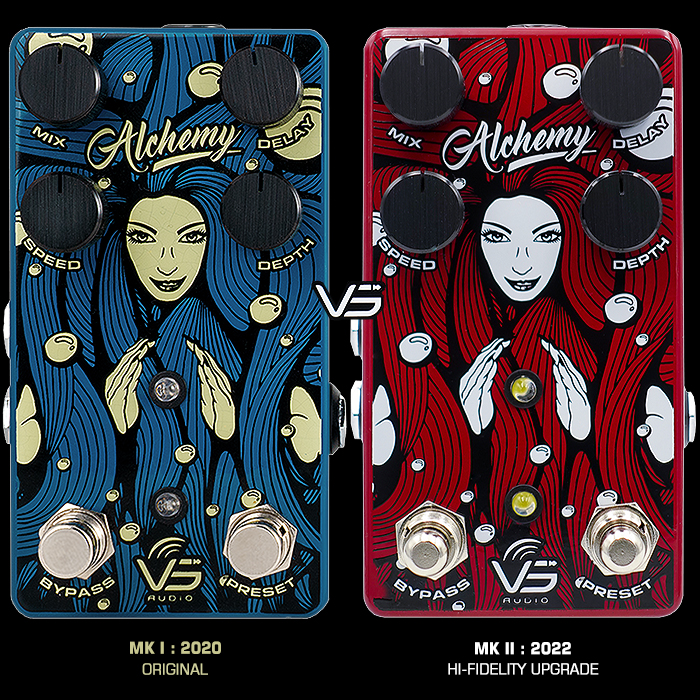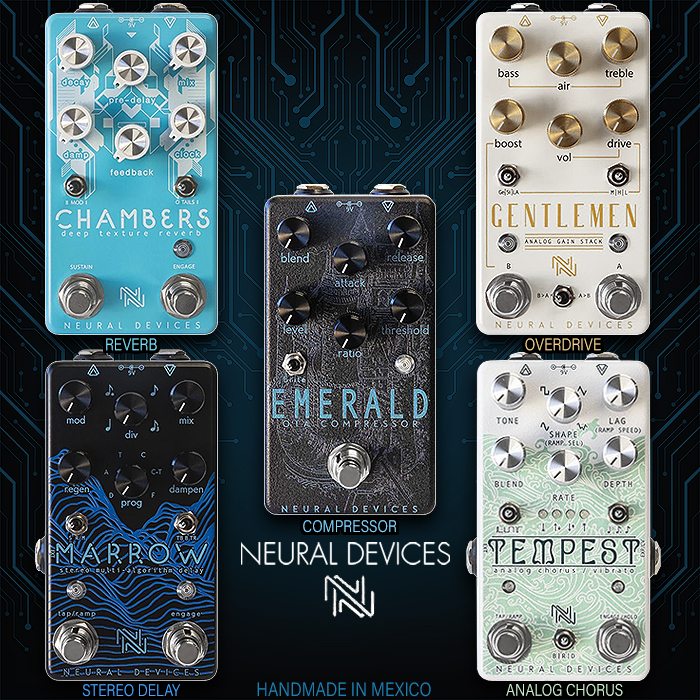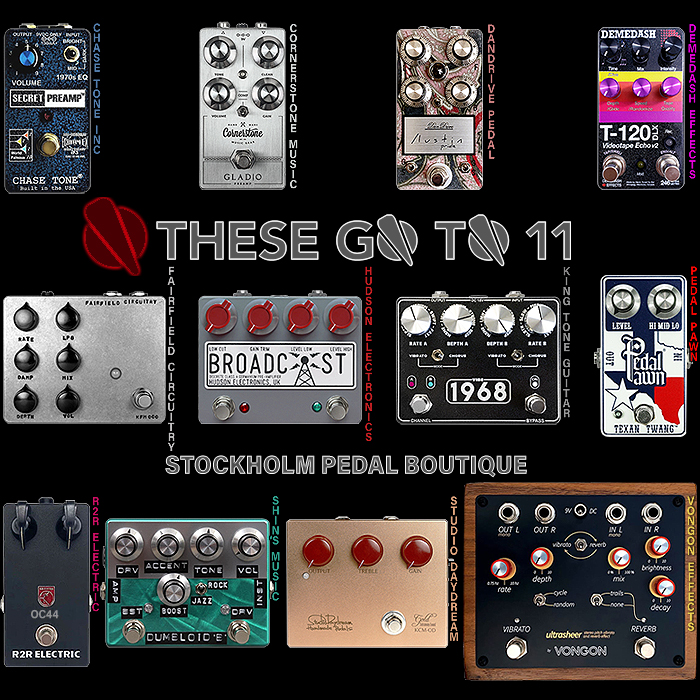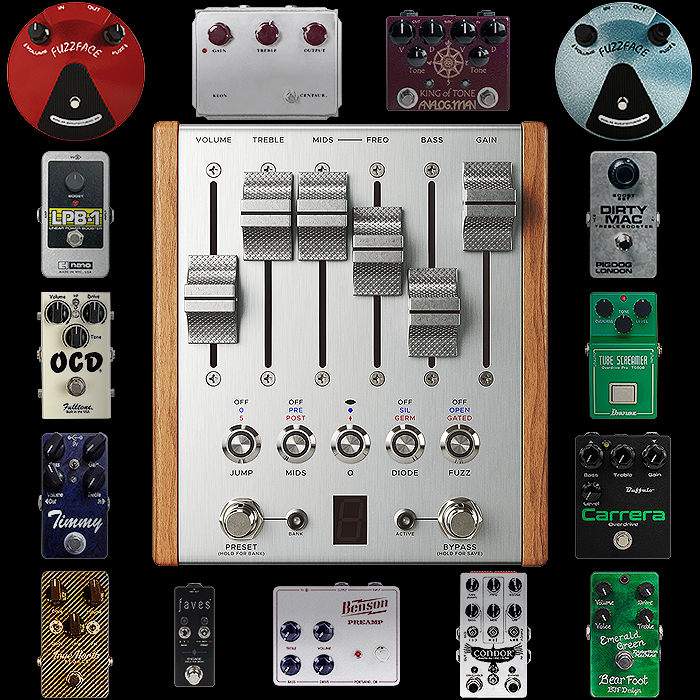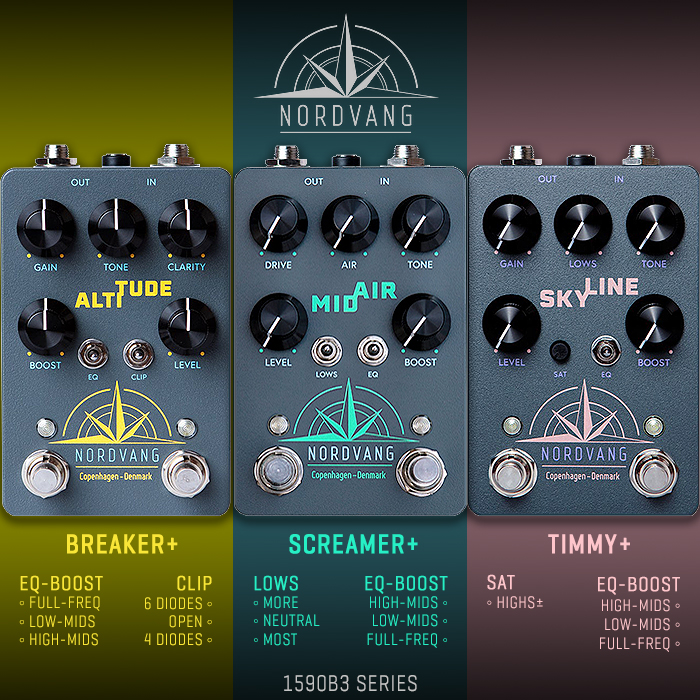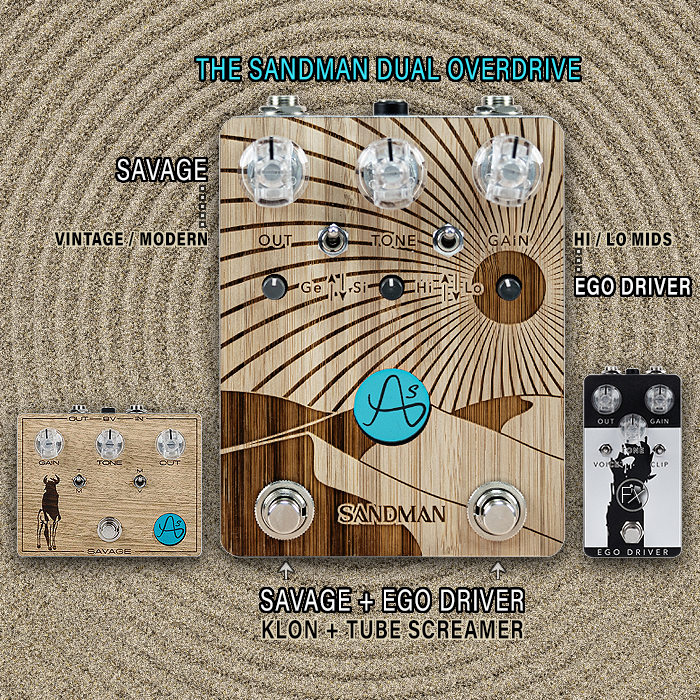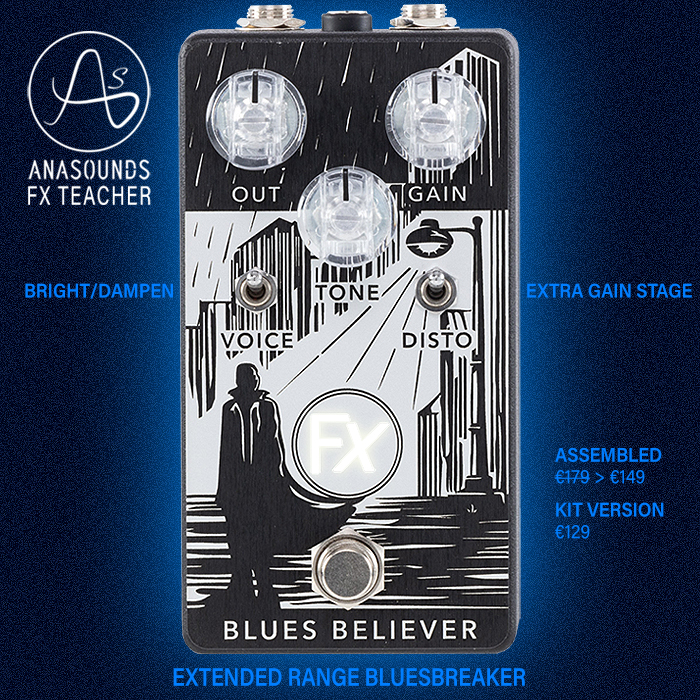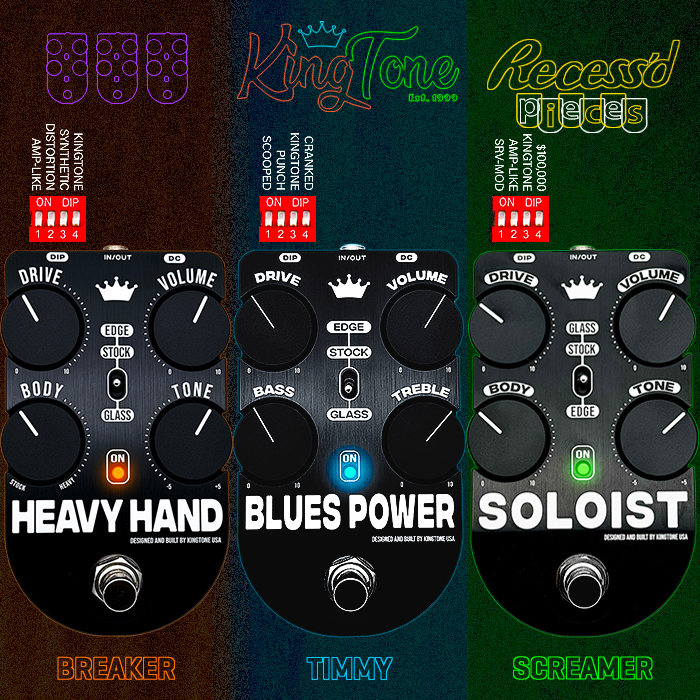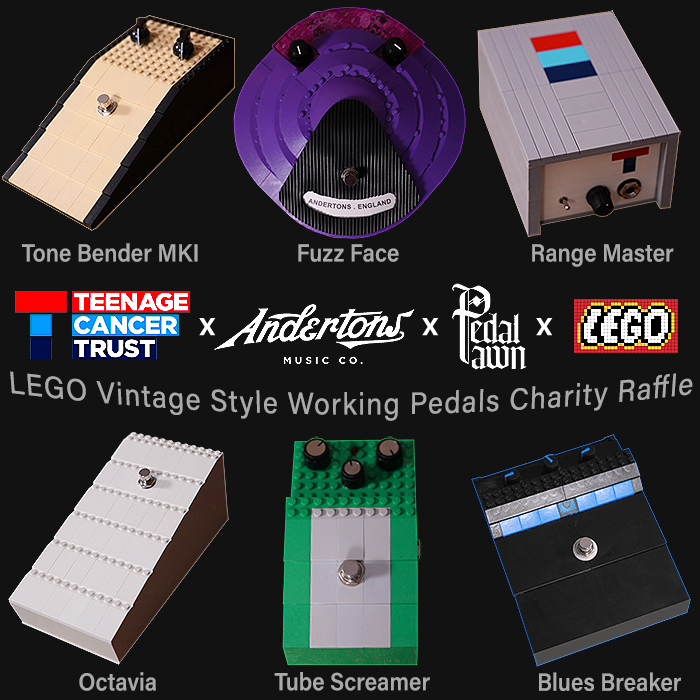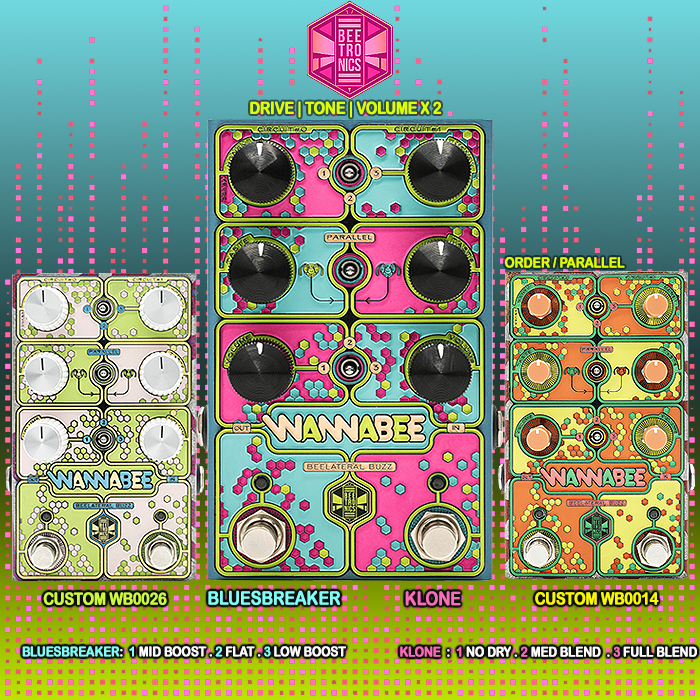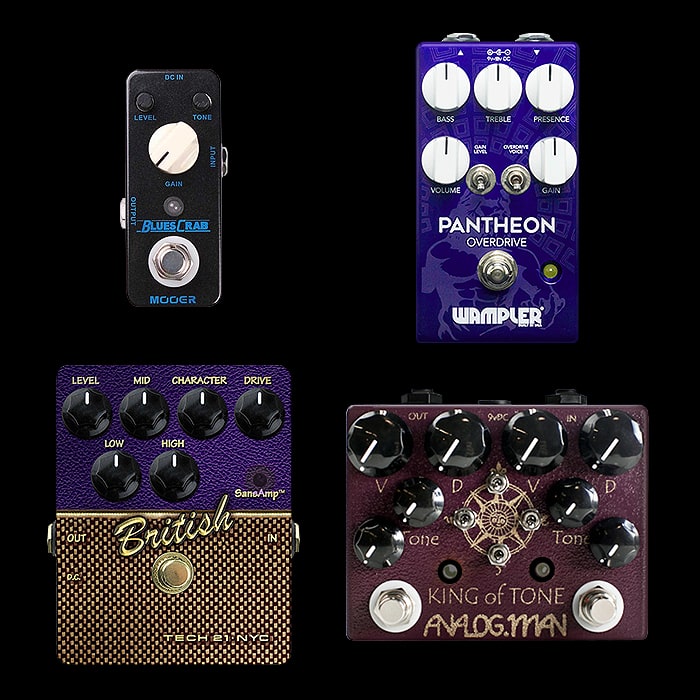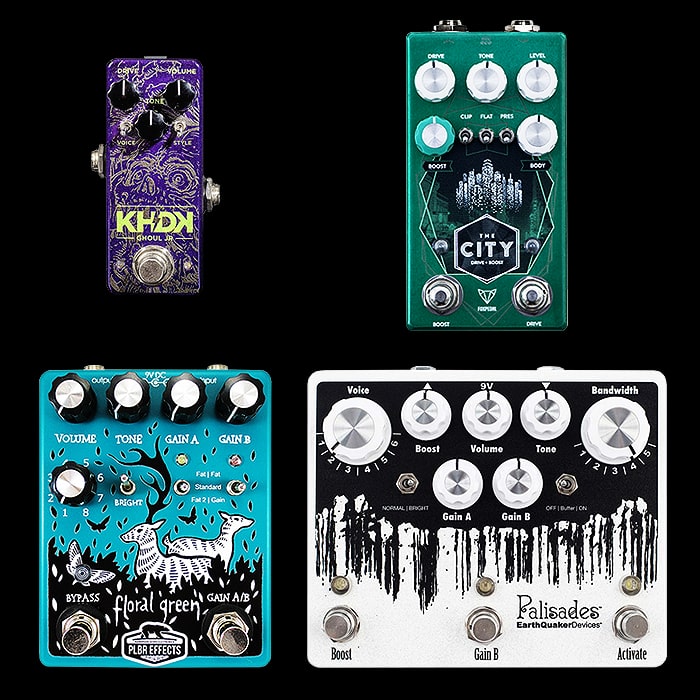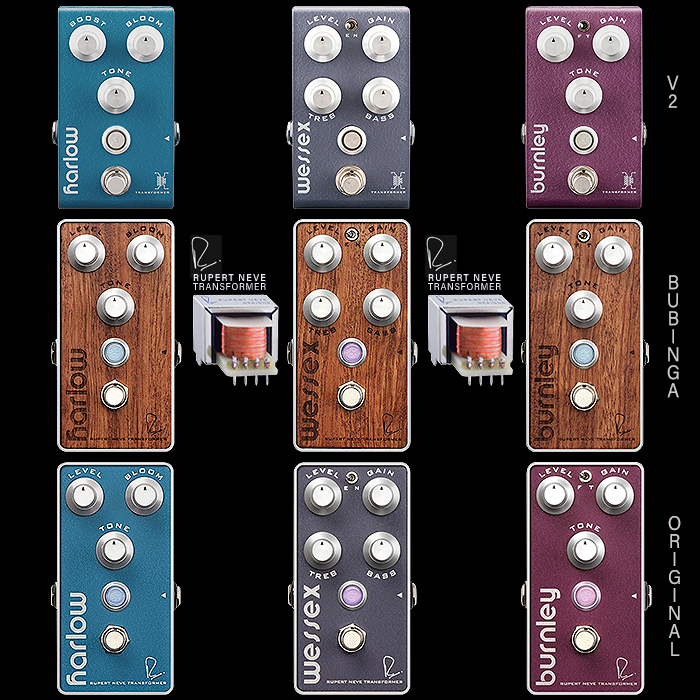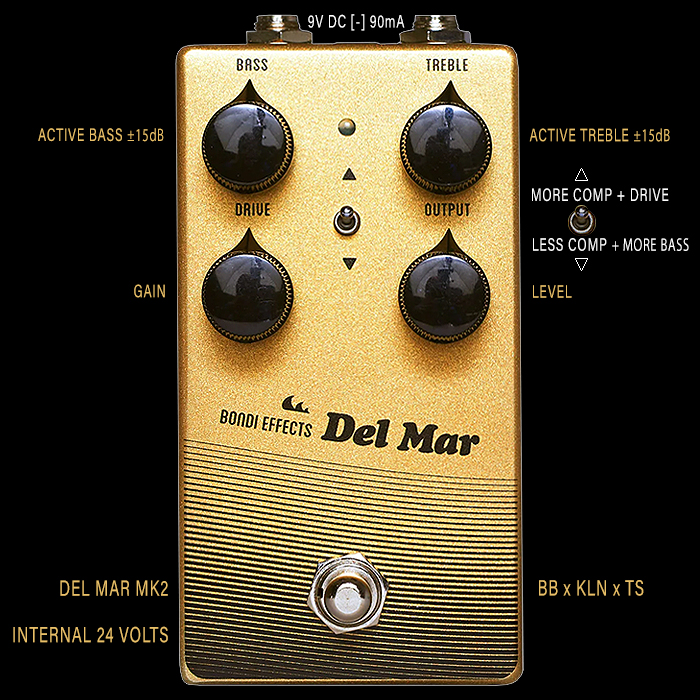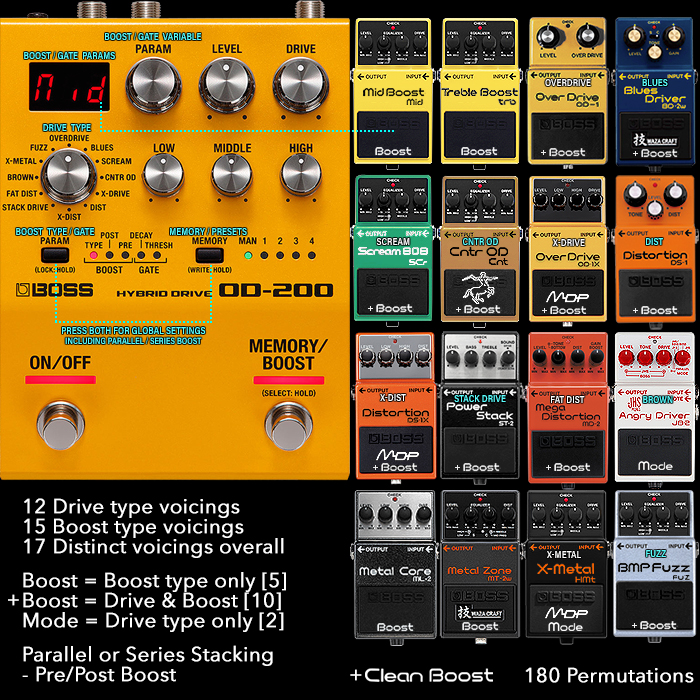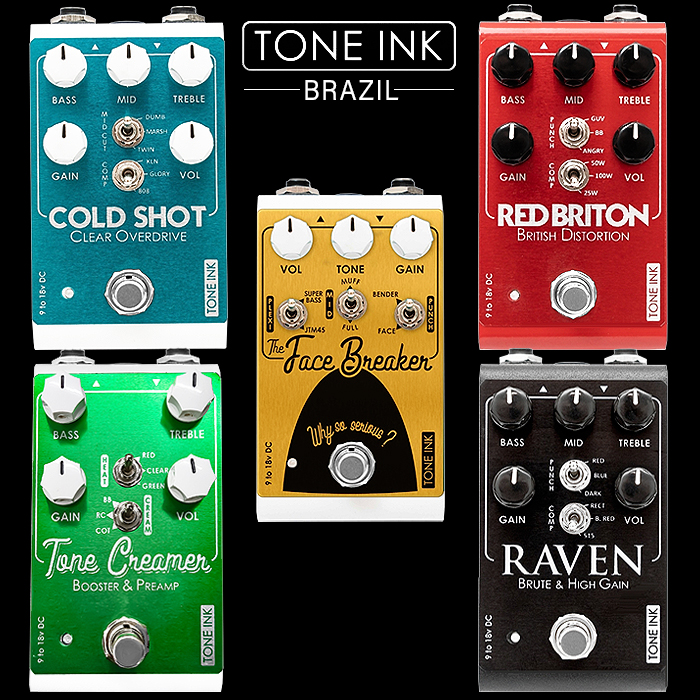Which Dual-Channel Blues Breaker Derived Overdrive Pedal is Right for You?
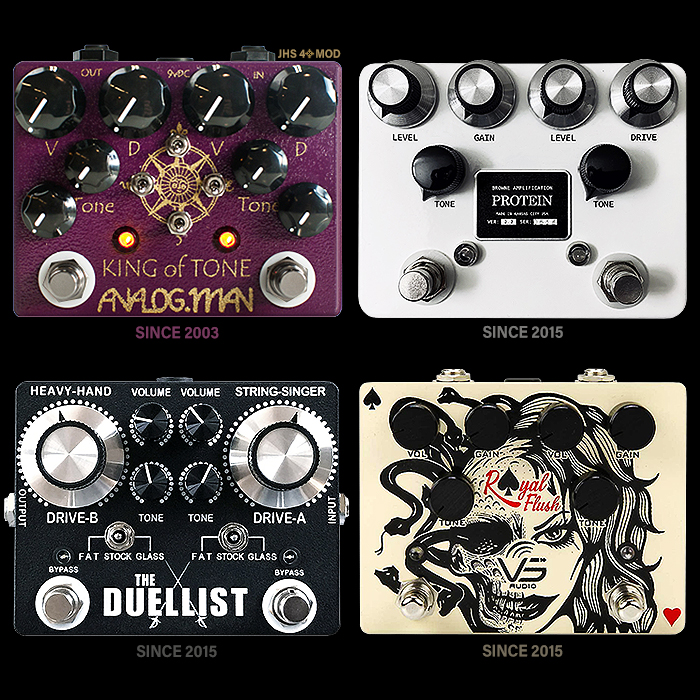
This article was sparked by my coming across a number of demos of the Browne Amplification Protein Drive dual overdrive which seems to be somewhat doing the rounds currently. I though it a fairly recent introduction in the scale of things, but was surprised to find that it’s really been around for a while.
In fact its earliest appearance goes back to 2015, which seemingly corresponds to the same year that the King Tone Duellist and VS Audio Royal Flush first materialised. And while not being copies or clones of the Analog.Man King of Tone, there is no doubt that said earlier pedal was the inspiration for all those that followed on over a decade later.
The King of Tone has itself gone through some significant changes since birth, and the circuit is very different know from its Blues Breaker origins. But the essence of these pedals is that you have a 2-channel Drive pedal, with one-side sort of a Tube-Screamerish overdrive, and the other a more fuller sounding Blues Breaker style drive/distortion.
The King of Tone typically has 2 pairs of internal dip-switches which allow you to select between 3 modes per channel - Boost / Overdrive / Distortion, and each channel has an additional internal Presence trim-pot to further fine-tune the high end frequencies. On Analog.Man’s options list you can surface a 3-way external toggle for the distortion channel, and there are a variety of other custom options available.
The waiting list for the King of Tone currently stands at around 2 years! So I was very fortunate to come across a JHS 4-Star Mod version of the same on Reverb.com a couple of years ago. At the time I had not realised Josh Scott had done his own modification for the King of Tone - which essentially externalised those dip-switches and trim-pots - giving you vastly extended versatility and usability. I paid around £470 for that privilege and am really most delighted with said pedal, and particularly enjoy stacking the two sides together.
So Mike Piera very much set the mould for this kind of genre, and David Brown, Jesse Davey and Panos Sotiropoulos were each inspired to go down fairly similar avenues. Chris Buck often uses both King of Tone and Royal Flush, and if you follow That Pedal Show - you will have seen Mick Taylor move on from King of Tone to Duellist at one stage - while his current favourite dual-channel overdrive is the Cornerstone Gladio Dumble-style circuit. At one point I had though about including the Gladio is this roundup - before realising that as a Dumble derivative it was a somewhat different animal - so I will no doubt cover that later.
Each of these 4 pedals have some degree of overlap, but as with any tuned circuit - they are all about the ears and preferences of their creators - which means that you get some fairly significant differences in circuit make-up and calibration - and that each of these can be viewed as distinct - where some are smoother or grittier than the others and may play better on single-coils vs humbuckers etc.
I will leave my final deliberations until the end, but feel that if you’re seeking out one of these you should be very satisfied by any of these listed here. There is some degree of variance in price - with the Duellist the priciest at $350, and the Royal Flush the most cost-effective at €220 / $250. All these pedals get made in batches, with there being a very extreme waiting list for the King of Tone - amounting to in excess of 2 years now. While the other 3 are generally much more available. There are also typically numerous examples of each on Reverb.com - but some inflated - so it really depends on how quickly you want your pedal and what you’re willing to pay to get it!
Here follows a little further detail on each :
Analog.Man King of Tone 2-Channel Boost/Overdrive/Distortion - starts from $265
As born out by its continued high demand, it seems that the King of Tone is still holding onto its crown in this area. The Duellist has its additional 3-way toggle switches for Fat/Stock/Glass, while my version of King of Tone goes one further with additional Treble presence controls. Moreover on the King of Tone you can switch the function of each of the sides of the pedal and have them in any order, while these others are pretty rigid in their operational hierarchy. Some say that the Duellist is better optimised for Single-Coil pickups, and that the Protein and Royal Flush both sound a touch smoother than the King - but it seems that the King of Tone is plenty smooth enough to me. This is such a successful formula that there are literally hundred of clones out there - supposed exact replicas, while the 3 listed alongside here are most certainly not direct takes on the King of Tone. I can well understand that you might not want to wait 2 years for the pleasure of your pedal, but I feel the price point is really very fair - this is not one of those prohibitive expensive pedals. And if you're desperate you can pay a little more over the odds for one on Reverb.com. Note also that while I feel that the original grape-coloured hue is the classic variant, you can get this pedal in a variety of colours including gold and black - which I've seen a lot of recently. There is no doubt that this is a bond fide classic and every bit worth its legendary status - conceptually and execution-wise this is just a fantastic combination of flavours and everyone should really have one!
Browne Amplification Protein Drive Dual-Channel Overdrive - $300
So this is the one I've been seeing a lot of late, and this pedal is as stated quite a bit older than I thought it was. It started out as a collaboration between Browne Amplification's David Brown and Guitarist/Prodcues Adam Sniegowski. The Green / Right Overdrive side is based on the Nobels ODR-1 to a degree, and the Blue / Left Channel is based on a Blues Breaker -style circuit. So really not that conceptually different to the King of Tone. In the above head-to-head comparison you can hear some differences in character, and there will be players that will lean one way or the other. There is no dispute though that this is another great sounding pedal. It is seen mostly in its olive green colourway, while you can also get it in black, white and red and possibly some rarer colours too if you ask David nicely. These are made in batches and typically sell out very quickly - so you need to move quick when they are made available, I can't see any in stock right at this moment.
King Tone The Duellist Dual-Channel Overdrive - $350
Jesse Davey's The Duellist is supposedly engineered to capture that Stevie Ray Vaughan signature Strat-led sound, and despite the Dumble-esqye monikers for each side - String-Singer and Heavy-Hand those are actually respectively based on Tube Screamer and Blues Breaker style circuits. The added differentiation here comes courtesy of those two Fat/Stock/Glass voicing switches per channel which significantly change up the character with more low-end or high-end emphasis. Single-coil specialists swear by this pedal, while RJ Ronquillo per the above demo show that humbuckers sound just as great too. This is a another fantastic sounding pedal, and I've found a number of these in stock as of this moment. Aesthetically also this variety is somewhat pleasing and has been released in a variety of enclosures too - including a really cool Chrome variation.
VS Audio Royal Flush Dual Channel Overdrive - €220 / $250
This is described as a Low Gain Overdrive on the right-hand Channel and a Medium Gain Overdrive on the left - both of which have been beautifully balanced for optimal stacking prowess. It does not state so explicitly, but the low gain channel certainly sounds something of that Tube Screamer family, and the medium channel has that lovely mid-range character which is so familiar in Blues Breaker style circuits. So this is a certain shoe-in for this category and remains VS Audio's best-selling pedal of all time. Chris Buck obviously puts it into excellent use per the above demo, and he is known to have both this and his King of Tone on the same pedalboard - so while they share certain similarities they are not the same thing. Much like the Browne Amps Protein - this is a very straightforward variety with no additional switches or trimmers - it's been beautifully calibrated for easy dialling-in. These are made in small batches still, while I note there are a few in stock with dealers at the moment, and two on Reverb.com.
Bonus Round 1 : JHS Double Barrel V4 Dual Overdrive (since 2011) [Moonshine + Morning Glory] - £299
A reader rightly pointed out that I omitted the Double Barrel from the above quartet. I was aware of it, it just did not fit the aesthetic at the time of its devising, but I do think it should be included in this roundup, as it does offer something a bit different and a little bit more, while being based on the same overall formula. Here we have JHS's Moonshine V2 Tube Screamer on the right-hand channel with ± switch and fairly unique Clean blend knob, while on the left is the Version 4 of Josh's Morning Glory. The pedal does have a Red Remote socket - so you can connect one of those mini switches to trigger the Gain switch of the Morning Glory - meaning you have 5 different degrees of saturation to play with - along with a toggle to change order of drives. I feel this is easily equal to the other 4 listed here, and some may likely prefer it. I noted in my previous article that there were many more Tube Screamer + Blues Breaker dual overdrives out there, so there will undoubtedly be a few more notables that I may have omitted here!
Bonus Round 2 : Keeley D&M Drive Signature Dan Steinhardt and Mick Taylor TPS Dual Drive - £229
I occasionally forget that the D&M Drive is somewhat based on one of Dan and Mick's favourite pedals - the King of Tone. Devised in conjunction with Robert Keeley, this has a Mick Boost Channel on the right and a Dan Drive Channel on the left. The Boost is a mid-hump Tube Screamer derivative - likely evolved from Robert's Red Dirt circuit, while the left Blues Breaker style Drive side is probably based to a degree on Robert's 1962X circuit. The tow advantages this has over a typical King of Tone - despite differences in calibration and voicing obviously - is firstly the 2-way series toggle switch, and secondly the ability to use TRS splitter cables to effectively splits the inputs and outputs into two separate midi-controllable pedals. Had I not acquired the JHS 4-Star Modded KOT - I might well have been in line with one of these as a great alternative, as I already have the special edition of KOT - that offers me a few more options that the D&M does not have. I still really quite like the D&M Drive - and it is in a more convenient and practical form-factor - and it looks great particularly in its super-rare Black livery - If I could get hold of one of those for reasonable money I might well consider it - but it's largely a nice-to-have rather than essential in my own context.
Final Thoughts
So I obviously have a King of Tone JHS 4-Star Mod as pictured and have to say I really love that pedal - it's ease of use and versatility, and it stacks amazingly - which is why I think that the Tube Screamer / ODR-1 + Blues Breaker combination is so much copied.
There is no question that the King of Tone is a fantastic pedal, but then also are the other 4 featured here - Protein Drive, The Duellist, Royal Flush and Double Barrel. I honestly think that most players would be satisfied with any of these - I guess as always it largely depends on price and availability. I also totally understand that people might be unwilling to wait 2+ years for a King of Tone - I certainly was.
I think it's a nonsense gesture to try to rank these in any way beyond feature set really. All sound fantastic, and my variant of the Tone King alongside the Double Barrel probably though provide the most versatility over-all - so I personally have no need of any of these others. If I had come by another variety first then I feel I would be satisfied with whatever choice I made at the time - I don't really see the point having more than one really - unless you are Chris Buck.
In addition to these there are hoards of more direct and obvious clones available from a myriad of small builders. Part of the magic is in the combination of those two circuits, and the rest is in the component selection and how those two overdrives are calibrated. Some of these pedals are better balanced than others, and some are sharper, grittier, smoother or fatter sounding, optimised variously for single-coils or humbuckers - take your pick really.
I think the my version of King of Tone is probably enough for me for now! Which one is your favourite?




















